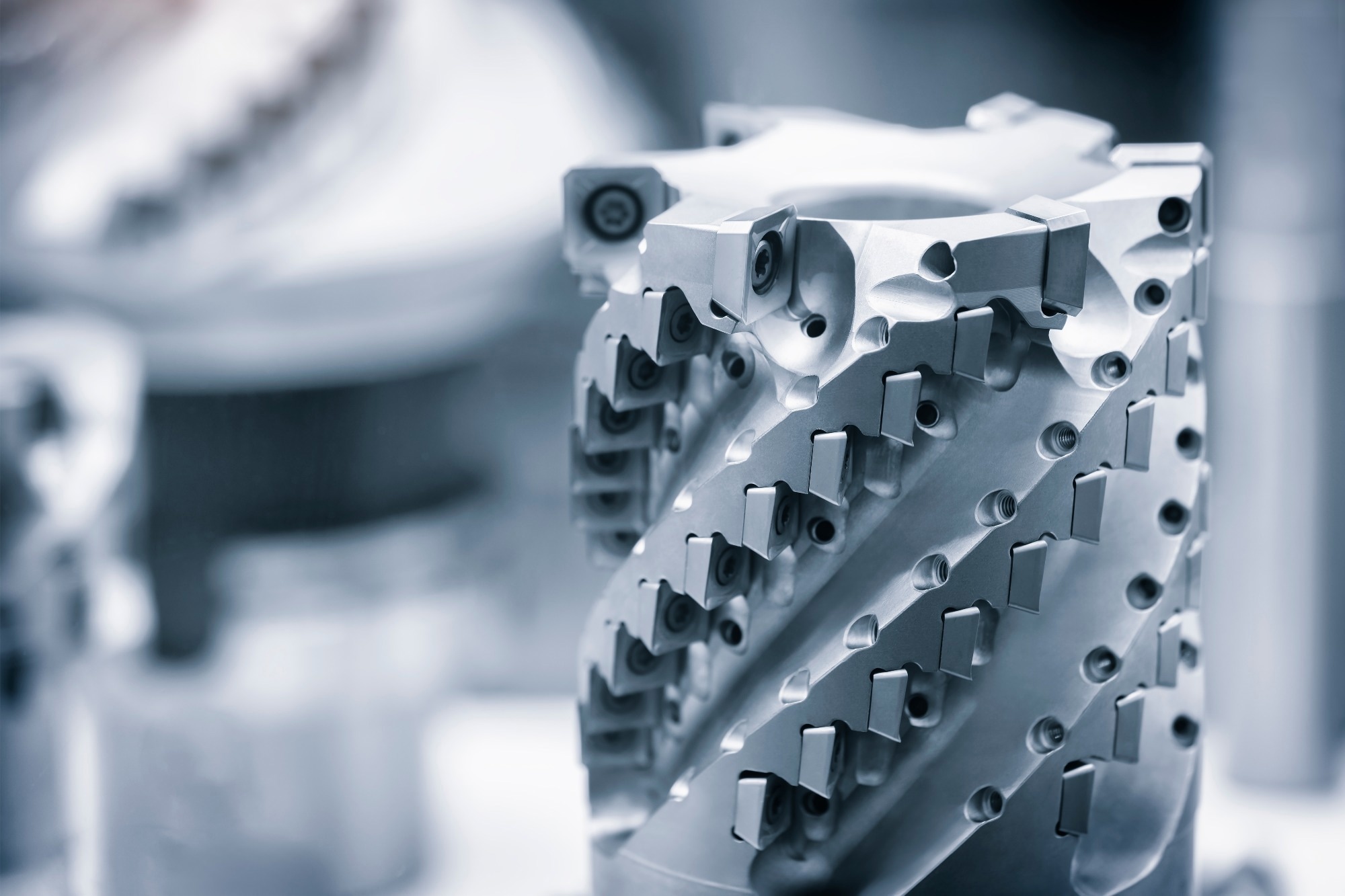Reviewed by Lexie CornerUpdated on Jan 16 2025
Tungsten carbide is a compound consisting of equal parts tungsten and carbon materials. It is one of the sturdiest chemical compounds used in manufacturing, with double the density of steel. Tungsten carbide is found in powder form and is shaped through a sintering process.

Image Credit: Matveev Aleksandr/Shutterstock.com
History of Tungsten Carbide
The journey of tungsten carbide began with the discovery of tungsten by Carl Wilhelm Scheele in 1781. However, it took 150 years before tungsten carbide found its place in industry.
The production of tungsten carbide can be traced back to the early 1920s when the German electrical bulb company, Osram, sought alternatives to costly diamond drawing dies for tungsten wire manufacturing. This led to the invention of cemented carbide, which quickly gained popularity in applications requiring high wear resistance.
Over time, advancements in tungsten carbide grain sizes have significantly influenced the hard metal industry. In the mid-1920s, grain sizes ranged from 2.0 to 5.0 µm. Today, the spectrum has widened significantly, with sizes ranging from 0.5 to 50 µm, and even up to 150 µm for specialized applications.
Properties and Manufacturing of Tungsten Carbide
Tungsten carbide is highly resistant to heat and pressure. It is manufactured by embedding tungsten monocarbide (WC) grains into a binder matrix, often made of cobalt. This combination facilitates effective densification during liquid-phase sintering, creating a pore-free structure. The cobalt binder, which is highly soluble in WC at elevated temperatures, ensures excellent wetting of the grains, resulting in a material that balances toughness, strength, and hardness.
Advancements in manufacturing techniques, such as solvent extraction in tungsten chemistry, hydrogen reduction, and carburization, have significantly improved the uniformity and purity of tungsten carbide powders. Innovations in spray drying, milling, and sintering have further enhanced the performance and durability of the material.
Particularly noteworthy is the continuous development of vacuum sintering technology, which began in the late 1980s. This was followed by the introduction of hot isostatic pressure sintering, both of which led to new quality standards in hard metal production.
Grain size remains a critical factor in determining tungsten carbide’s properties:
- Fine Grains (0.5 µm): Provide high hardness and wear resistance, essential for cutting and drilling tools.
- Coarse Grains (up to 150 µm): Offer greater toughness, ideal for heavy-duty applications like mining tools.
Applications of Tungsten Carbide
The consumption of cemented carbide has grown exponentially, from a yearly global total of 10 tons in 1930 to approximately 30,000 tons at present. This growth reflects the widespread adoption of tungsten carbide in various industries.
Mining and Cutting Tools
Cemented carbide has transformed industries like rock drilling and steel machining. Mining tools with cemented carbide tips last up to 10 times longer than traditional steel-based tools, reducing downtime and boosting operational efficiency.
In steel machining, cutting speeds have increased from 25-50 m/minute to 250 m/minute. This fivefold increase in speed has transformed productivity in metalworking industries.
Wear Parts
A large percentage of tungsten carbide is used in wear part applications, ranging from ballpoint pen balls to industrial dies, punches, and hot rolls for steel mills.
Many of these wear parts are composed of straight WC-Co (Tungsten Carbide-Cobalt) hardmetals without additional carbides. This composition provides an optimal balance of hardness and toughness, making these parts highly resistant to wear in demanding industrial environments.
Coatings
Coatings have significantly improved tungsten carbide tool performance. The first significant advancement came with the development of a thin titanium carbide coating, approximately 5 µm thick, applied using chemical vapor deposition (CVD). This innovation increased tool service life by 2 to 5 times. Subsequent developments introduced multilayer coatings with materials like titanium nitride and alumina, further enhancing durability by up to 10 times.
Electronics
Ultrafine tungsten carbide hardmetals are commonly used in the production of printed circuit board (PCB) drills, which require precise holes with diameters as small as 0.1 mm. These dimensions are critical for meeting the specifications of electronic device manufacturing.
To address the precision demands of PCB drilling, cemented carbide compositions with grain sizes between 0.4 and 0.8 μm have been developed. These materials provide the necessary wear resistance and edge stability to maintain consistent performance in high-accuracy manufacturing processes.
Other Industrial Uses
Tungsten carbide is used to machine non-ferrous metals such as aluminum and copper. It is also used in chipless forming processes, where materials are deformed into specific shapes through methods like rolling or extrusion.
Tungsten carbide-tipped tools are commonly used for machining cast iron and wood due to their durability and ability to maintain sharpness. In the oil industry, tungsten carbide increasingly replaces steel in extraction and processing tools because of its resistance to abrasive conditions. It is also used in semiconductor manufacturing, where its properties support the production of integrated circuits.
These applications demonstrate tungsten carbide's functionality and effectiveness in various demanding industrial environments.